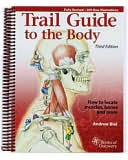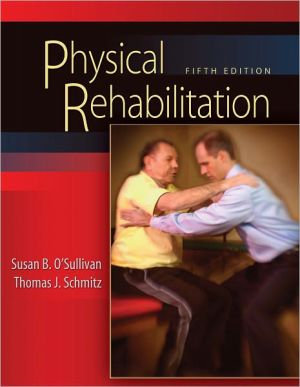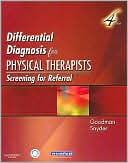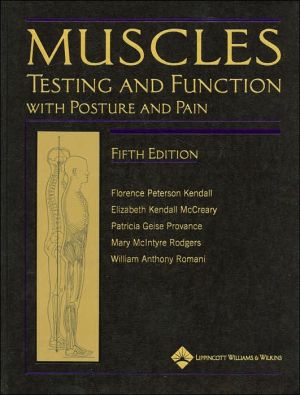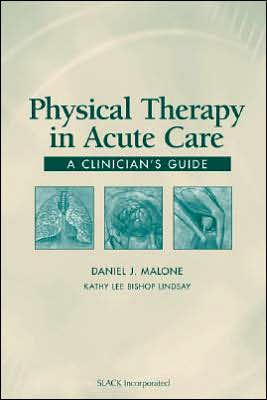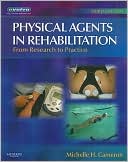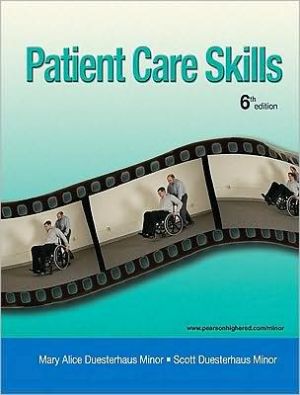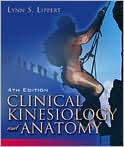The Rehabilitation Specialist's Handbook
This accessible, portable desk reference contains volumes of useful and handy information your students need now and will refer to throughout their careers.\ "...an amazing volume of useful information. Just browsing through it can be a fascinating pastime and educational experience." Advance for Physical Therapists and PT Assistants, review of 2nd Edition\ \ \ The book contains predominantly two-color illustrations, with some black-and-white illustrations.\
Search in google:
...an amazing volume of useful information. Just browsing through it can be a fascinating pastime and educational experience. Advance for Physical Therapists and PT Assistants, review of 2nd Edition This accessible, portable desk reference contains volumes of useful and handy information your students need now and will refer to throughout their careers. Additional Resources. A PDA version of this title by Skyscape is available at www.fadavis.com. Doody Review Services Reviewer:Steven Nussbaum, MD(Rehabilitation Institute of Chicago)Description:This is the third edition of a reference designed to provide information about topics in the field of physical medicine and rehabilitation predominantly using charts, glossary of terms, outlines, and illustrations. Previous editions were published in 1991 and 1998. Purpose:According to the authors, this handbook was not written to replace conventional reference books but to "... provide information that clinicians need in a succinct form." In addition, the materials are organized to "...facilitate clinical practice.Audience:Even though most of the sections of the book are authored by physical therapists, the handbook is intended for use by various rehabilitation specialists such as physicians, nurses, therapists, and students. Features:The handbook covers topics such as musculoskeletal anatomy and therapy, neuroanatomy and therapy, pulmonary anatomy and therapy, cardiac rehabilitation, prosthetics and orthotics, pediatric issues, and geriatric issues. Massage, soft tissue techniques, and various modalities are also covered. The book provides excellent charts, graphs, and outlines to the reader. The index and table of contents are sufficient to locate specific topics without difficulty. The illustrations are high quality and pertinent to the chapter topic. A deficiency in the book is the inadequate number of listed references in most of the chapters.Assessment:This is an excellent book written in clear and concise language. Because it uses mainly charts, glossary of terms, outlines, and illustrations, it is best used as a reference book in conjunction with other rehabilitation textbooks. Physicians, residents, medical students, nurses, and therapists interested in the field of rehabilitation should find this book to be a valuable educational and clinical resource.
\ Americans with Disabilities Act and Accessibility Issues (Including Wheelchair Information)\ Musculoskeletal Anatomy, Orthopedics, and Orthopedic Therapy\ Neuroanatomy, Neurology, and Neurologic Therapy\ Pulmonary Anatomy and Pulmonary Therapy\ Vascular Anatomy, Cardiology, and Cardiac Rehabilitation\ Pediatrics\ Geriatrics\ Measurement, Assessment, and Outcomes\ Kinesiology and Gait\ Prosthetics and Orthotics\ Psychology and Psychiatry\ Electromagnetic, Thermal Modalities and Electrotherapy\ Massage and Soft-Tissue Techniques\ General Medicine (Including Oncology and AIDS)\ Pharmacology\ Burns\ Reference Tables and Conversion Charts\ \ \ \ Translations: Useful Expressions\ Appendix: First Aid
\ From The CriticsReviewer: Steven Nussbaum, MD(Rehabilitation Institute of Chicago)\ Description: This is the third edition of a reference designed to provide information about topics in the field of physical medicine and rehabilitation predominantly using charts, glossary of terms, outlines, and illustrations. Previous editions were published in 1991 and 1998. \ Purpose: According to the authors, this handbook was not written to replace conventional reference books but to "... provide information that clinicians need in a succinct form." In addition, the materials are organized to "...facilitate clinical practice."\ Audience: Even though most of the sections of the book are authored by physical therapists, the handbook is intended for use by various rehabilitation specialists such as physicians, nurses, therapists, and students. \ Features: The handbook covers topics such as musculoskeletal anatomy and therapy, neuroanatomy and therapy, pulmonary anatomy and therapy, cardiac rehabilitation, prosthetics and orthotics, pediatric issues, and geriatric issues. Massage, soft tissue techniques, and various modalities are also covered. The book provides excellent charts, graphs, and outlines to the reader. The index and table of contents are sufficient to locate specific topics without difficulty. The illustrations are high quality and pertinent to the chapter topic. A deficiency in the book is the inadequate number of listed references in most of the chapters.\ Assessment: This is an excellent book written in clear and concise language. Because it uses mainly charts, glossary of terms, outlines, and illustrations, it is best used as a reference book in conjunction with other rehabilitation textbooks. Physicians, residents, medical students, nurses, and therapists interested in the field of rehabilitation should find this book to be a valuable educational and clinical resource.\ \ \ \ \ Bill KeeleyThis the second edition of a handbook of information essential to the rehabilitation professional. The reference work is organized to allow clinicians quick access to information. Intended to be carried with the clinician, the handbook is arranged into tables and figures, categorized by color-coded tabs. The authors describe the intent as ""assisting practitioners to function in an outcomes-focused world."" The original intent of the first edition was to develop an easily portable method of concisely organized information in a concise fashion. This goal has clearly been accomplished. A great variety of topics are presented in a thorough, succinct manner. The book is targeted to any rehabilitation professional. The authors have included information that could appropriately be used by physicians, nurses, physical therapists, occupational therapists, and speech language pathologists. Although the authors are physical therapists themselves, they sufficiently cover the full realm of rehabilitation. The book is over 1000 pages divided into 21 chapters covering the Americans with Disabilities Act and accessibility issues; musculoskeletal anatomy, orthopedics, and orthopedic therapy; neuroanatomy, neurology and neurologic- general and visceral anatomy; pulmonary anatomy and pulmonary therapy; vascular anatomy, cardiology and cardiac rehabilitation; pediatrics; geriatrics; measurement, assessment, and outcomes; kinesiology; gait; prosthetics and orthotics; psychology and psychiatry; electromagnetic, thermal modalities and electrotherapy; massage and soft-tissues techniques; general medicine; pharmacology; AIDS, burns; reference tables and conversion charts; and translations. The book isneatly organized in charts and graphs, appropriately referenced. By changing the page size, the authors were able to enhance the portability of the book while adding material. As a result this edition is only several hundred pages longer than the first, but contains at least one-third more material. They have done more than just collect information and reprint it; they have organized material into tables and figures that facilitate clinical practice. This is an excellent resource for any practicing clinician and is highly recommended.\ \ \ 3 Stars from Doody\ \

